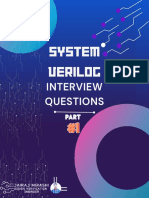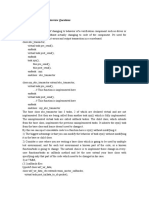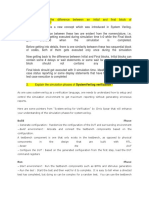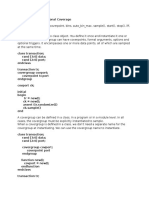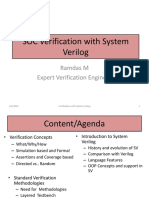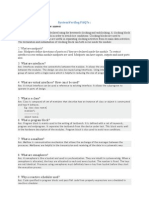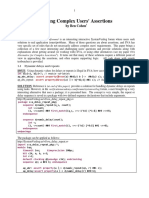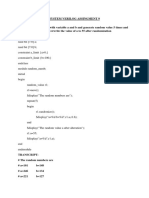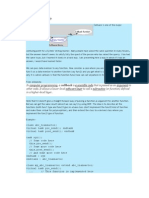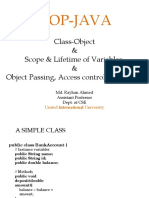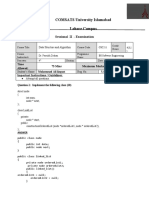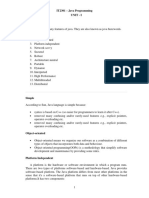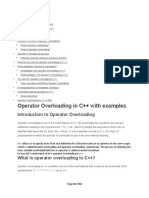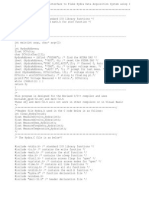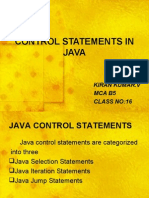0% found this document useful (0 votes)
963 views14 pagesSystemVerilog Interview Guide
The document discusses virtual interfaces in SystemVerilog. It provides 3 key reasons for using virtual interfaces: 1) modularity, 2) hierarchical connectivity, and 3) flexibility. Virtual interfaces allow modular design, decoupling module interfaces from implementations. They provide a structured way to interconnect modules and offer flexible connectivity options.
Uploaded by
Harshith Reddy (Harshith)Copyright
© © All Rights Reserved
We take content rights seriously. If you suspect this is your content, claim it here.
Available Formats
Download as PDF, TXT or read online on Scribd
0% found this document useful (0 votes)
963 views14 pagesSystemVerilog Interview Guide
The document discusses virtual interfaces in SystemVerilog. It provides 3 key reasons for using virtual interfaces: 1) modularity, 2) hierarchical connectivity, and 3) flexibility. Virtual interfaces allow modular design, decoupling module interfaces from implementations. They provide a structured way to interconnect modules and offer flexible connectivity options.
Uploaded by
Harshith Reddy (Harshith)Copyright
© © All Rights Reserved
We take content rights seriously. If you suspect this is your content, claim it here.
Available Formats
Download as PDF, TXT or read online on Scribd
/ 14
